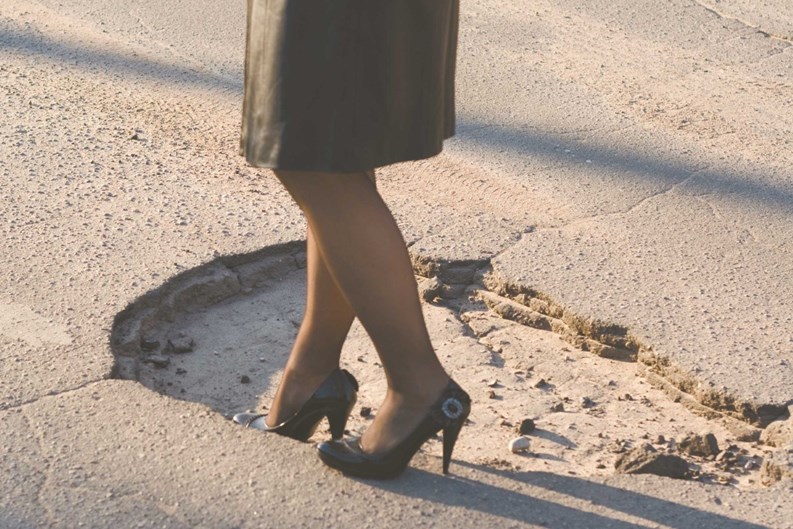Insurance is a hassle and an expensive necessity for any condominium. A great way to bring costs down and to keep them down is to reduce liability. Many things that can help with insurance costs are along the lines of common sense, and keeping a few basic things in mind, and in repair, can make a lasting difference in the cost of coverage for an entire building or community.
Watch Your Exposures
The first step may be simpler than you think. Without hiring anyone from an outside source, any homeowner’s association can request a questionnaire from their insurance company that goes over common risks and exposures at the property. By filling out the questionnaire, a community association can quickly get a rough sketch of problem areas.
Even better, most insurance companies will arrange a site visit by a risk assessment officer to the property, says Chris Wilson, president of C.V. Mason & Company in Waterbury, Connecticut.
“I think the best bet is to contact your insurance agent and have a loss control engineer make an evaluation,” he says. “You can also go out and hire an engineer, but for the most part, most insurance companies will provide that service to you free of charge.”
Wilson says his agency lines up risk assessments for its condominiums all the time. “We would call the insurance company’s loss control departments and say, ‘ABC condo wants to have an evaluation. Can you please send out a loss control engineer and work with their board?’”
Once the engineer turns in his report, says Wilson, the board and property manager will have a specific guide to exposures on the entire property.
But what exactly is an exposure? An exposure is anything that can result in a claim, like a slippery lobby or a cracked sidewalk. Part of the key to minimizing insurance costs is to reduce your exposures, to minimize them by doing what’s called risk management or loss control. Most of them relate to common sense in providing the safest possible premises to avoid potential for bodily injury.
Hal Connell, loss control consultant with GNY Insurance in Quincy, Massachusetts, says a huge exposure he sees over and over is the poorly maintained parking lot. “You'll see a lot of older condos, and they still have the original pavement down, and they've gotten beaten up.”
Typical problems found in the older lots include potholes and a variety of cracks. All of these conditions can let water collect and lead to freeze-thaw cycles, which speed up wear and tear and create slip-and-fall hazards, Connell says. While condos may be hesitant to repair their parking lots due to tight budgets, Connell says they can start with the most dangerous areas first and work out from there. “You don't have to do it all at once. Just pick the bad areas and patch them first.”
Another big slip-and-fall hazard results from downspouts, which he says are frequently pouring rainwater directly onto pavements. “They're not necessarily broken,” says Connell of the downspouts, “They just haven't been set up properly.” Connell recommends rerouting downspouts or extending them so they empty their rainwater at least three to four feet away from the pedestrian walkways.
Connell says another major exposure that he sees often are interior fire doors left open by residents, typically because they don't want to be bothered with opening and closing doors. One easy, low-cost solution is to install electromagnetic devices that hold doors open, but allow them to slam shut when a fire alarm goes off. “When the alarm goes off, electricity stops going to the electromagnet and allows the door to close,” he says.
Fire and water
Other areas of high exposure at the condominium typically involve fire and water – not on the outside, but inside the building.
Wood-burning fireplaces need to be inspected annually and if they need cleaning a professional chimney sweep should be employed, says Connell. In many condominiums, he says, management companies will take it upon themselves to inspect all fireplaces and then hire the sweep. Condo units found to need fireplace cleaning will be billed on a pro-rated basis, he says.
On the water damage front, Connell says most exposure results from water heaters and washing machines. Water heaters more than five years old are at great risk of failing and causing a flood, he says. The best route is to carefully note the date that the water heater was installed, then “watch it like a hawk” after the half-decade mark. The unit should then be replaced at the first sign of leakage, he says.
For washing machines, says Connell, burst-resistant hoses are worth their weight in gold. Because a burst hose will allow about 22 gallons of water a minute to spill into a condominium, the extra expense of the heavy-duty hoses can be easily justified, he says. Since most washing machines are inside condo units — and outside the control of the board — management companies face two choices. They can cajole the residents to get the hoses installed, or just go through and install them on their own in every unit. Many times, condos require the burst-resistant hoses to be installed when the unit is sold, Connell says.
Deferred Maintenance
Sometimes the association may not have the capital on hand to perform necessary repairs as soon as they are noted, but this can adversely affect insurance premiums, says Edward Mackoul, president of New York-based Mackoul & Associates. “You’ve got to update the building. If you have an old building with circuit breakers, it may need updating. Old fuse boxes can create a risk of fire. A common cause of fires is over-fusing, which can lead to accidents and deaths.”
“Same thing with the plumbing,” continues Mackoul. “If you have a building that was built in 1910, it is almost a hundred years old. It’s not a matter of if, it’s a matter of when the plumbing is going to leak. If you update plumbing and fixtures, there will be fewer claims and the premiums will be lower.”
Other Ways to Keep Costs Down
Outside of addressing liability issues, there are other ways that boards can lower insurance costs, says Mackoul. “Increase the deductible on the policy to lower premiums. A lot of buildings these days have a $1,000 deductible, and in this day and age, a smaller building could carry a $2,500 or $5,000 deductible, while a larger building can go as high as $10,000. The higher the deductible, the lower the premium.”
Another tactic is to take care of smaller dollar grievances without reporting them, says Mackoul. “You don’t want to be submitting smaller claims, generally. To an insurance company, claim frequency is probably the worst thing there is. They would rather see one $50,000 claim than ten $5,000 claims. The theory is if we’ve had ten smaller water damage claims, eventually we’ll have a larger one and it also means the plumbing is in poor condition. Ten slip-and-falls outside probably means that there is a problem with the sidewalk, or they are not shoveling in a timely fashion.”
Good practices like shoveling in a timely fashion will usually lead to lower claims, which is why insurance companies are sticklers about good practices.
Penny Wise and Pound Foolish
Although everyone agrees with the principles of good practices, the problem comes when they have to be paid for. But boards with limited funds and unit owners in a penny-pinching mood need to keep their eyes on the exposure ball, says Wilson.
“Obviously I'm cognizant of the economic times. Boards are having difficult times passing on maintenance fees to their members, but they certainly have to plan and prioritize the maintenance of their units so they don't have liability exposure,” he says. “You don't want to forgo taking care of some maintenance items like where the water is dripping down on the steps and someone slips and falls on that and become seriously injured. You may have a large claim and then your insurance rate is going to go up.”
And condominiums that suffer rising insurance rates are being penny wise and pound foolish, says Wilson.
Denton Tarver is a freelance writer and a contributor to New England Condominium.







3 Comments
Leave a Comment